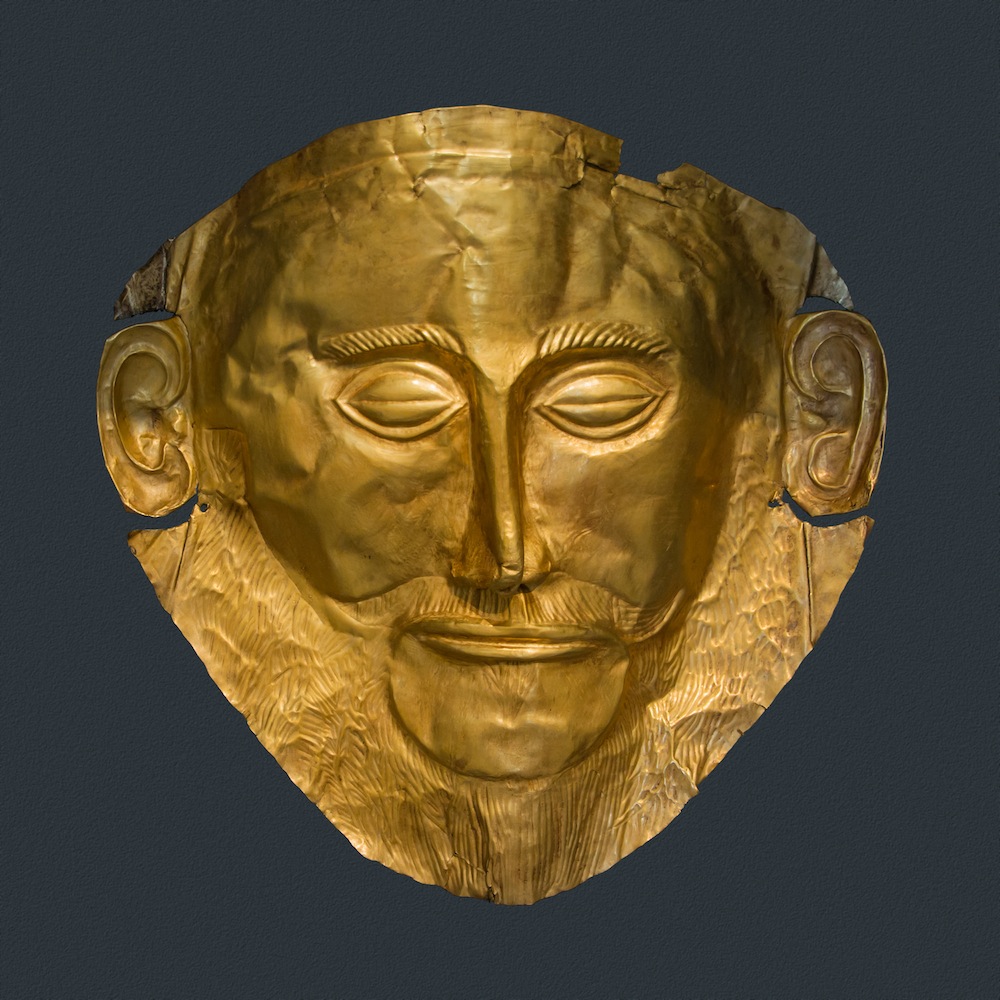~A guest post by CHS interns Doug Hill and Drew Latimer~
The National Geographic Museum in Washington D.C. is hosting an exhibit featuring artifacts from over 3,000 years of Greek culture. Though the exhibit is titled THE GREEKS: Agamemnon to Alexander the Great, the earliest artifacts on display come from the prehistoric period, long before the bronze age in which the Homeric heroes fought and died, and the latest artifacts were crafted in the decades after Alexander’s death in 323 B.C.E. The exhibit runs through October 10.
THE GREEKS begins in the neolithic and then progresses into the Bronze age. A collection of Cycladic figures is the first notable part of the exhibit. There is a replica Cycladic figure which visitors are encouraged to touch – a feature continued throughout the exhibit. Even for a viewer who has seen dozens of Cycladic figures, being able to handle a replica made this experience a special one. Moving forward in time, much of the exhibit is dedicated to Schliemann’s discoveries at Troy. A copy of the mask of Agamemnon is on display, as well as a genuine death mask on loan from the National Museum of Archaeology in Athens. Near a real sword from a Mycenaean tomb is a replica which visitors can handle, and a video in front of the display shows how the replica was made, allowing the viewer to imagine what the original would have looked like more vividly. Another video explaining how a Mycenaean button on display was made, which features a craftsman pressing gold onto a bone carving, was of special interest to anyone interested in jewelry, handicrafts, or how ancient craftspeople produced such wonderful works of art with limited technology.
After the Bronze age, there is a brief transition in the form of an iron age grave. The visitor then proceeds into Archaic Greece. Exhibits include Geometric style pottery, spear heads, and an explanation of the Homeric epics in the context of the time at which they were written down. The displays in this section also feature examples of the athletic equipment used in the ancient Olympic games. The sporting artifacts include discuses and strigils, tools used to scrape oil and dust from an athlete’s body.
The section on Classical Greece includes several examples of black-figure and red-figure ceramics, but as in the the Bronze Age section, the best features of this part of the exhibition are videos and touchable objects. Visitors can hold a replica of a bronze Athenian jury ballot between their thumb and forefinger just as ancient jury members did in order to conceal their votes. Nearby a video explains the arcane process of selecting a jury in Athens.The exhibit ends with displays of the armor and weaponry used by the Macedonian forces of Philip II and his son Alexander the Great in the fourth century B.C.E. Included here are Philip’s actual greaves, custom made to fit his deformed shins.
The collection on display is outstanding – short of visiting the National Archaeological Museum in Athens, one could hardly do better. The Mycenaean artifacts are a special strength of the exhibit, with artifacts from many tombs, and items of interest to not only to Hellenists, but also their friends and families. The “tactile element” of the exhibit is another strength, and the replicas available to handle bring the displays to life. The video demonstrations are accessible, well produced, and entertaining. Anyone near Washington this summer should try to visit.
If you want to learn more about the exhibit, visit the National Geographic Museum’s website.

